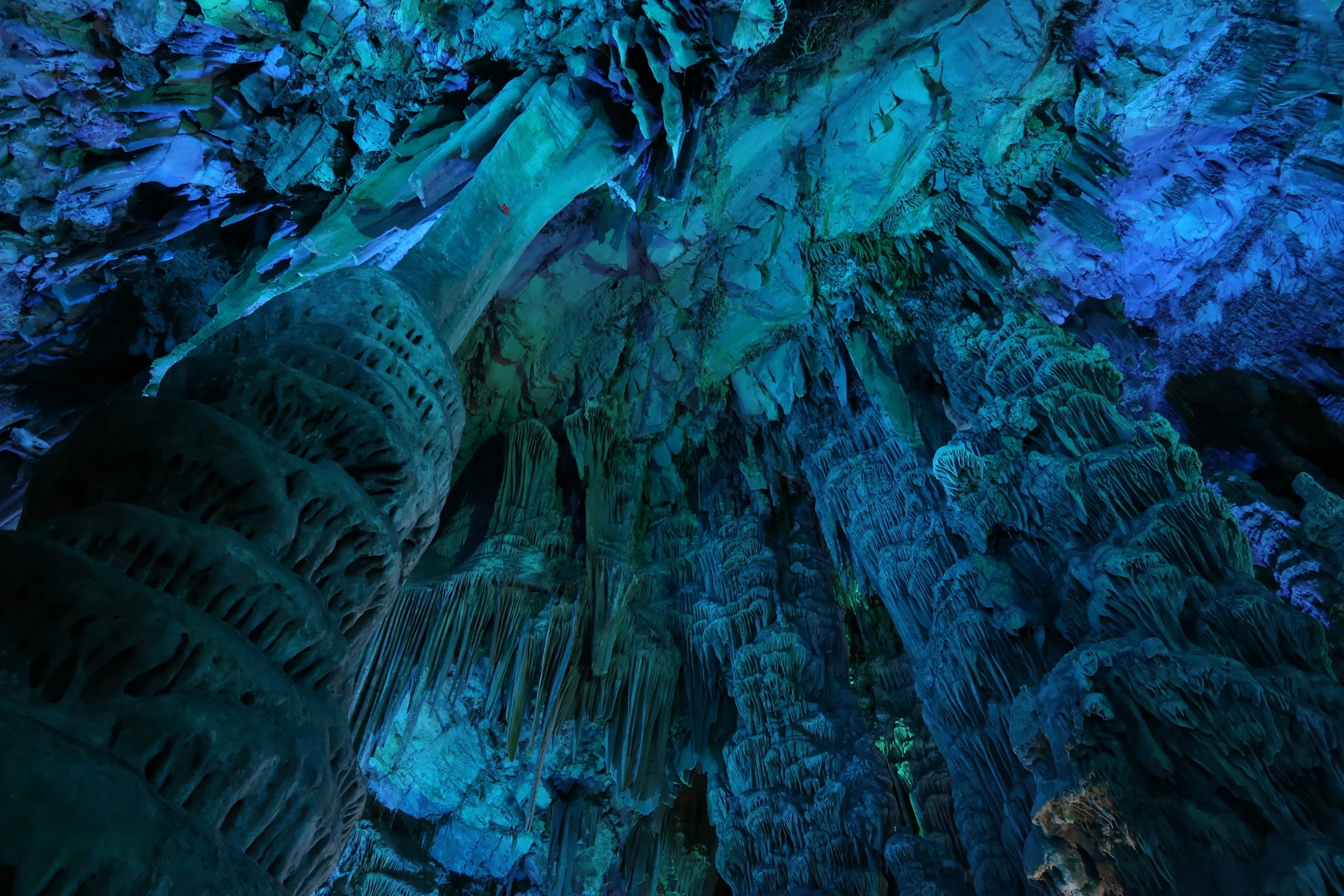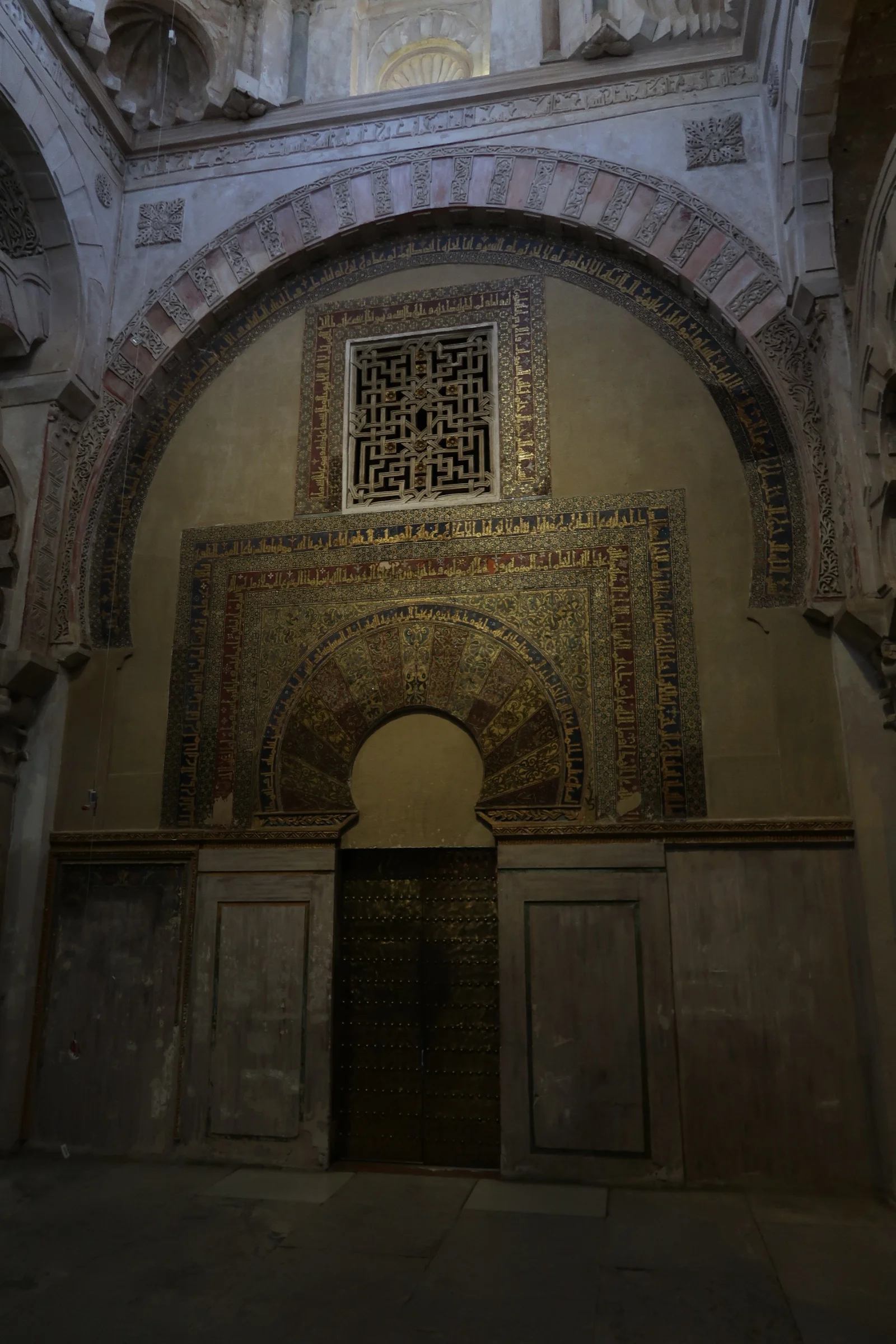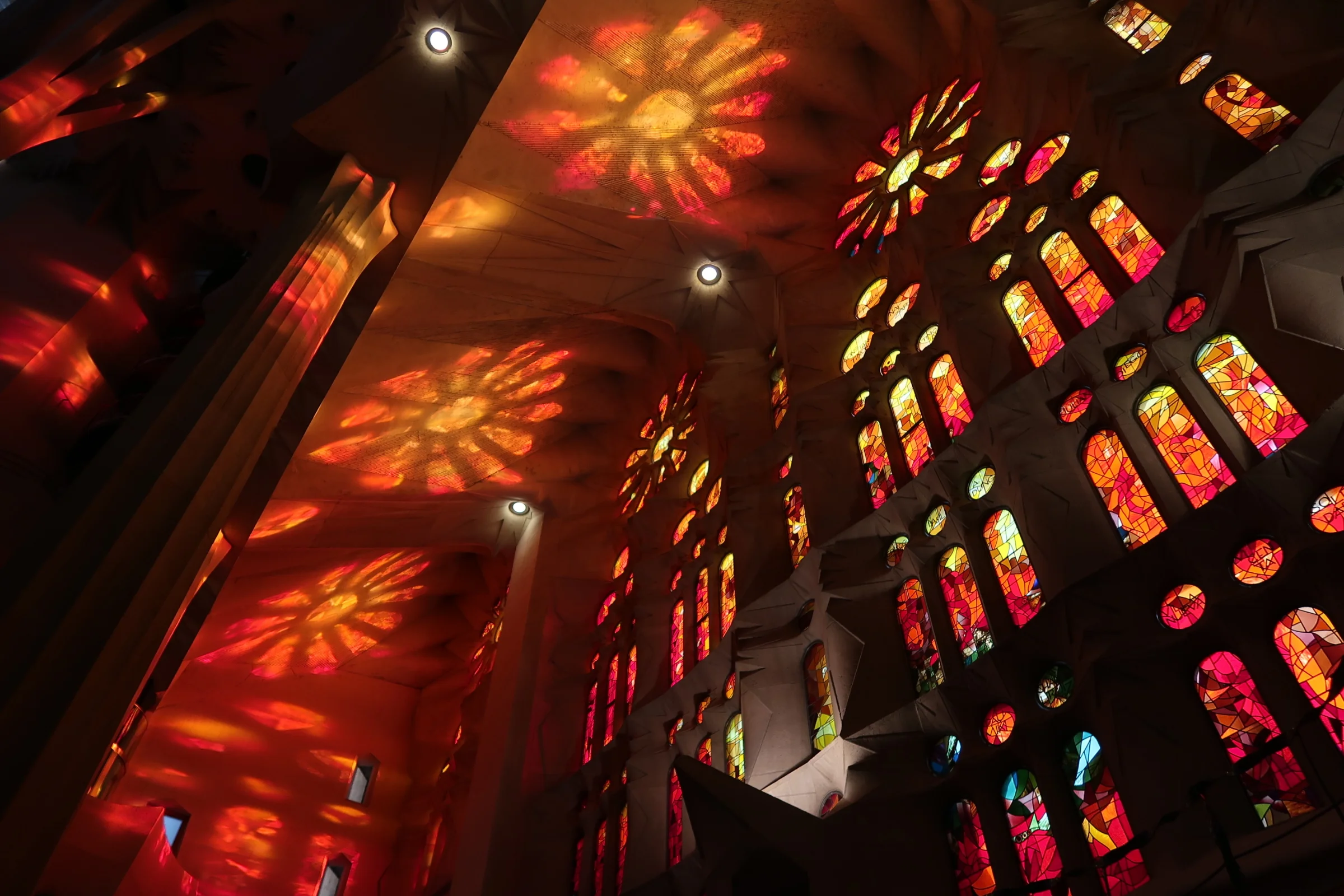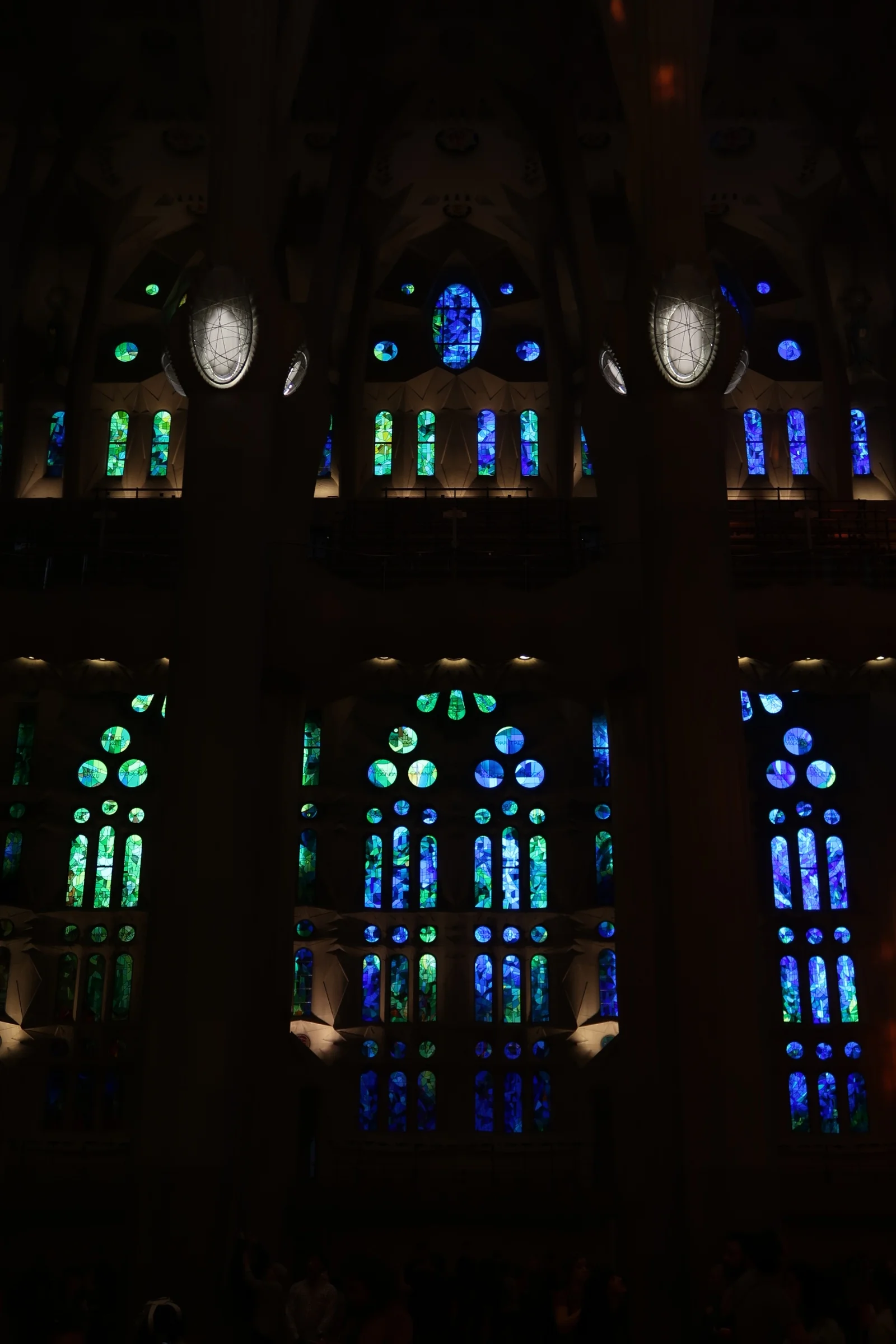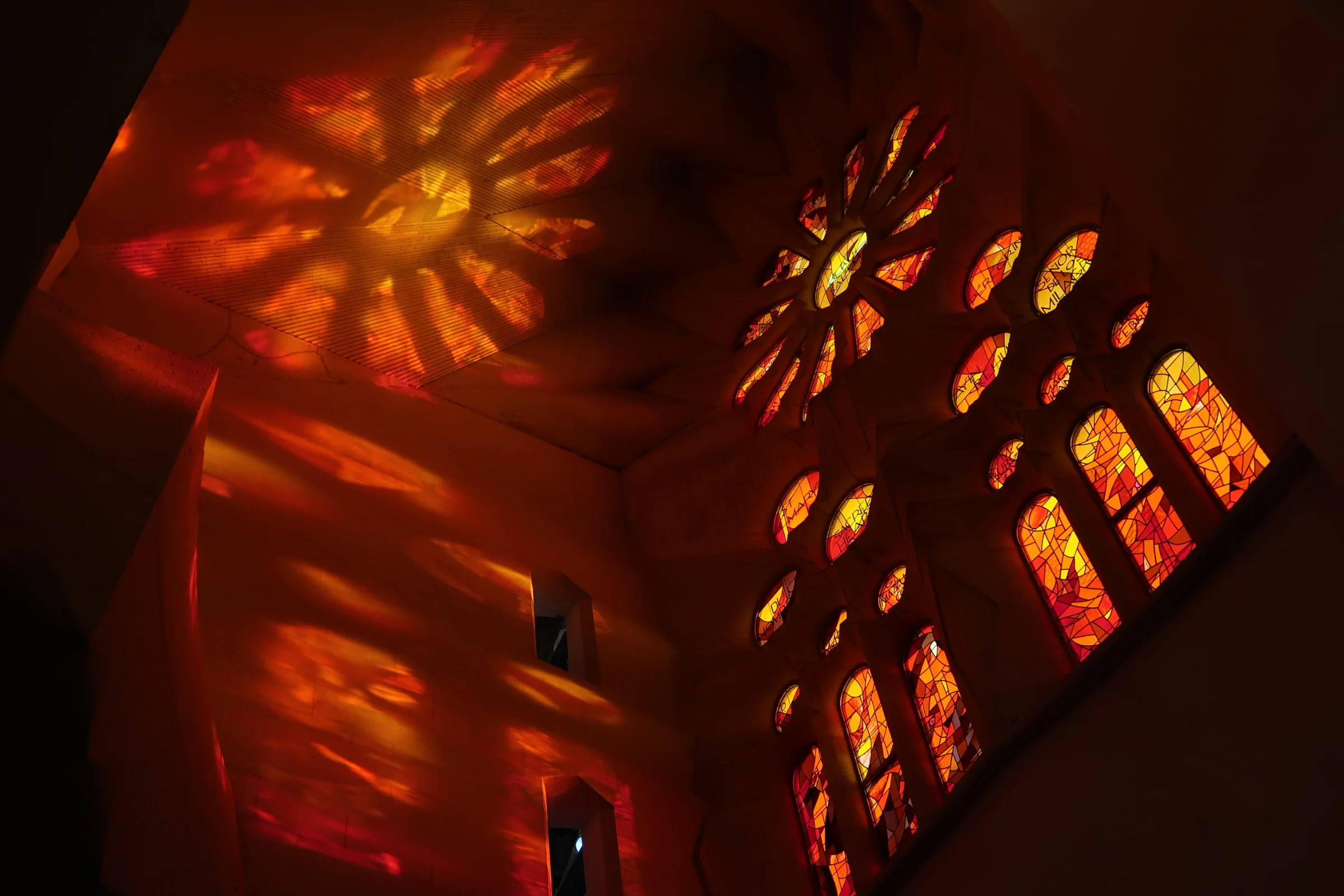Spain: Part II
UPDATE (October 24 - November 5)
My last update left off in Valencia. From there, we continued South toward Morocco. The cities grew visibly less and less "European" as the Moorish and Jewish influences increased.
GRANADA
First, we toured the Albayzín, which plays host to white-walled homes and stone-paved streets barely more than a meter wide. Some owners mount plants and painted pottery on their walls.
But most residents leave the white facades untouched and instead focus the decoration in the interior of the house, a reminder that beauty lies within.
A door in the Albayzín :)
Later, we visited the Alhambra, a walled city that was rebuilt from Roman ruins by a Moorish emir. Upon the conclusion of the Christian Reconquista, it became the Royal Court of King Ferdinand and Queen Isabella.
The Court of the Lions, The Alhambra, Granada, Spain.
Despite occupation by Christian royalty, Arabic writing and Islamic geometry still cover the walls.
Arabic may not be the most beautiful spoken language, but in written form it holds a great aesthetic beauty.
The Alhambra is such an incredible sight and it made me wonder, How many man hours went into the construction? This is hard to pinpoint, as each occupant of the palace commissioned his own additions, so the palace grew to its current magnitude over many, many years.
What techniques did they use to create all these different three dimensional patterns? Despite my best efforts, I cannot find more information on this and if anyone knows, please share!
Who created all of those patterns? Also having trouble figuring this one out, however, I did learn that as a general rule Arabic inscriptions decorate the upper parts of the walls, while geometrical tiled designs decorate the lower parts.
GIBRALTAR
On our way to Seville, we stopped in Gibraltar, which isn't actually part of Spain. It is a British Overseas Territory that is only a bit more than 4 miles square. Everthing is so compact that the road that leads into town crosses the airport runway. Beyond that, I was not impressed with Gibraltar at all. It was dirty and cramped and lacked character. But, the big sight to see is the Rock of Gibraltar.
Tourists crossing the runway with the Rock of Gibraltar in the background.
We all hopped in a van driven by an ex-military man with a thick, part-British, part-Spanish, part-I-have-no-clue-what accent and raced up the mountain at a pace much too fast for my comfort. We stopped partway up for a view of Morocco. All I saw were clouds:
At the top, we toured a small set of caves that were fitted with psychedelic lights, auditorium seating, and a stage. In addition to the tours that take place in the caves, concerts, shows, and dramas also utilize the space, taking advantage of its natural acoustic properties.
Cathedral Cave, St. Michael's Cave, Rock of Gibraltar, Gibraltar.
Outside the caves, wild monkeys played with each other, posed for photos, and interacted with the locals.
The caves and monkeys were entertaining but felt like a total tourist trap, so overall, I wasn't too impressed with Gibraltar.
SEVILLE
In Seville, I most enjoyed touring a bullring. My guide did an outstanding job at explaining both sides of the controversy that surrounds this age old tradition. Some see it as cruel animal torture. After all, it does involve lodging knives into the bulls' shoulders to instigate them, teasing them as they begin to bleed, and ultimately killing them in front of a cheering audience.
But others see it as an art. When you understand the nuances of the fight, the matador and bull become dancers working not against but with each other.
Furthermore, the bulls raised for fighting are free range and their meat is consumed, not wasted, after the fight. I know that I could not be a spectator at one of these events, but I can respect the significance in maintaining the traditions of your ancestors.
A traditional Matador's cape.
I also loved the Metropol Parasol, designed by Jürgen Mayer. It is a huge wooden structure that houses shops, an archaeological exhibition, and rooftop eateries. The design is reminiscent of mushrooms, which gives it the Spanish nickname, “Las Setas,” and it draws inspiration from the vaults of the Cathedral of Seville and ficus trees in a nearby plaza.
The Metrapol Parasol, Seville, Spain.
You feel as though you should throw up your hands and scream at the top of your lungs as you walk, or run, the rollercoaster of a pathway that winds around the rooftop. I may or may not have done this...Also, the views from here were absolutely incredible:
CÓRDOBA
The Mezquita-Catedral de Córdoba is exactly what it sounds. A mosque meets a cathedral. Since its birth as a small Catholic temple, it jumped from Muslim to Christian hands multiple times, with renovations accompanying each changeover. Muslims and Christian even shared it for several decades in the 8th century. I found it fascinating to walk through one structure that has housed two very different religions over the years. It is evident which parts are of Muslim construction.
The Mezquita-Catedral of Córdoba is considered one of the best displays of Moorish architecture in the world.
And, which parts are of Catholic construction.
King Charles V of Castile and Aragon was responsible for the construction of this starkly different, Renaissance style nave in the center of the structure. But, he was upset when he visited the completed site. "They have taken something unique in all the world and destroyed it to build something you can find in any city," he complained.
Nowadays, the Mezquita-Catedral of Córdoba is affiliated with the Catholic Church and Muslims are not permitted to pray within the temple despite recent campaigns. However, I still found it powerful to see masterpieces from both religions preserved under one roof. I glimpsed the peace that exists in having respect and tolerance for one another, despite differing beliefs.
TOLEDO
Medallions like these become pendants, earrings, bracelets, etc.
BARCELONA (again!)
After two crazy weeks, my Contiki tour finished in Madrid. I hopped onto a high speed train and headed back to Barcelona for my last week in Spain! I visited La Sagrada Familia just before sunset. As I entered the basilica, a golden haze filled the cavernous space. I discovered the source on the Western facing wall. There, massive stained glass windows towered above a sea of tourists and rays from the setting sun projected colorful patterns onto the ceiling, columns, and walls. It was absolutely breathtaking.
The opposite, Eastern facing wall delivers the same effect with cooler tones at sunrise.
Gaudí once said, “Sunshine is the best painter and the light changes with the time.” He proved it in La Sagrada Familia.












